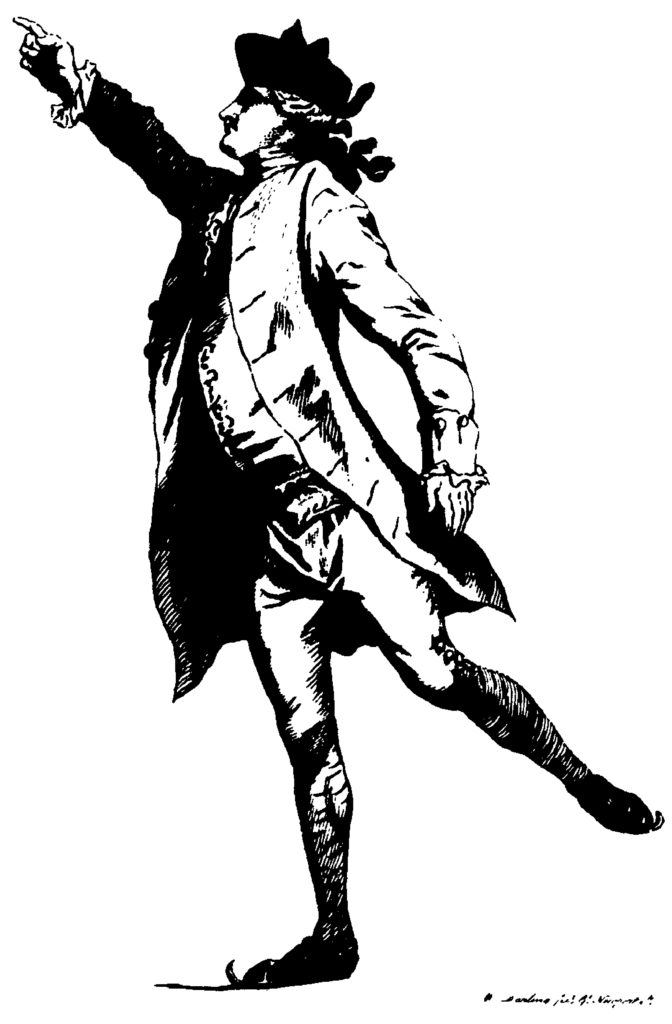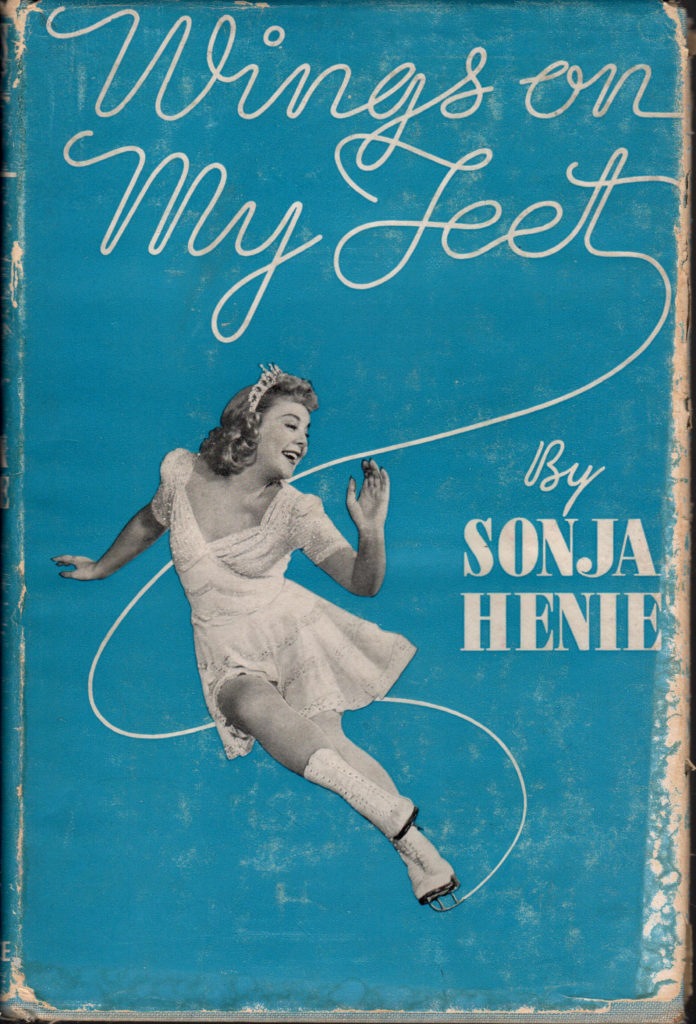This fanciful move goes all the way back to the eighteenth century. In the first book on skating (or at least, the earliest one that survives), Robert Jones described it like this:

…to perform the attitude of a flying Mercury, is nothing more than the spiral line, except that the arms are not employed in the same manner; the figure [right] represents the attitude on the right leg, and almost at the conclusion of the stroke; but at the beginning the body must lean forwards pretty much, with the right hand pointing to the ice, and slowly raised with the body, till you are quite upright; when you would finish the stroke, bring down the left leg, and throw it suddenly up before you, at the same time bearing on the right heel; by which means you may spin round two or three times, in order to conclude the spiral line, which should always be formed when in the attitude of Mercury.
R. Jones and W. E. Cormack, A Treatise on Skating, 63.
Readers who learned about Classical mythology may recall that Mercury (or Hermes, his Greek counterpart) had a pair of winged sandals that enabled him to fly from place to place. In fact, the first recorded use of scritscos, the ancestor of Schlittschuh—the German word for ice skate—is a gloss to Mercury’s talaria (winged sandals) in an early tenth-century manuscript in the Bodleian Library at Oxford, Auct. F. 1. 16 (Gallée, 162).
This connection has come down through the centuries in German etymology. Goethe, who described himself as a “leidenschaftliche Schlittschuhfahrer” (passionate skater) in his autobiography, thought that skating is not about sliding on little runners, but rather, “like the Homeric gods, strid[ing] over the sea become a floor on winged shoes” (Fowler, 81).

The connection between skating and flying has endured: Sonja Henie, the three-time Olympic champion who learned to ski before she learned to skate, called her autobiography Wings on My Feet.
…skiing was like flying, and this flying made me winter-drunk, an affliction I have never got over. Later I changed my type of flying, from wooden runners to steel blades, but the state of intoxication remained the same.
S. Henie, Wings on My Feet, 6.
References
G. H. Fowler. 2018. On the Outside Edge: Being Diversions in the History of Skating. Edited by B. A. Thurber. Evanston, IL: Skating History Press.
J. H. Gallée, ed. 1894. Old-Saxon Texts. Leiden: Brill.
J. W. von Goethe, Aus meinem Leben. In E. Trunz, ed., 1948. Goethes Werke: Hamburger Ausgabe in 14 Bänden, volume 9. Hamburg: C. Wegner. My translation.
R. Jones and W. E. Cormack. 2017. A Treatise on Skating. Edited by B. A. Thurber. Evanston, IL: Skating History Press.
S. Henie. 1940. Wings on My Feet. New York: Prentice-Hall.
